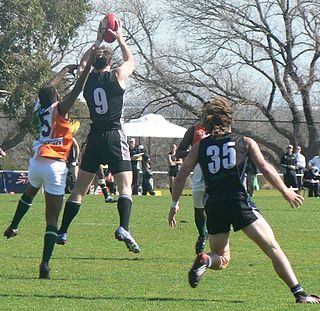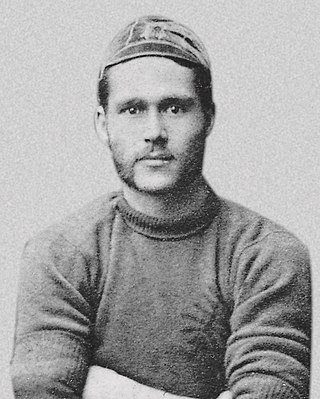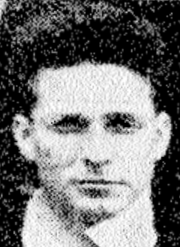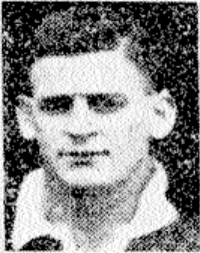Related Research Articles

Australian rules football in New Zealand is notable as the first colony outside of Australia to take up the sport as early as the 1860s and was home to the first club formed outside Australia in 1876. The sport's official name was changed in 1890 to Australasian Football acknowledge New Zealand's participation and remained for some time even after the country was expelled from the Australasian Football Council. After a half century hiatus of organised competition, it has grown rapidly as an amateur sport. Today five of New Zealand's sixteen regions have organised competitions: Auckland ; Canterbury ; Wellington ; Waikato and Otago. A four-team national competition with a national draft has been contested at the North Harbour Stadium in Auckland since 2016 for men and 2019 for women. The national team were crowned International champions at the 2005 Australian Football International Cup and competed annually against the AFL Academy between 2012 and 2019. Since the 2010s the game has also grown at junior level among New Zealand schools as the "Hawks Cup".

The Australia women's national rugby union team, also known as the Wallaroos, has competed at all Women's Rugby World Cups since 1998, with their best result finishing in third place in 2010.

Joseph Astbury Warbrick was a Māori rugby union player who represented New Zealand on their 1884 tour to Australia and later captained the 1888–89 New Zealand Native football team that embarked on a 107-match tour of New Zealand, Australia, and the British Isles.
The Auckland rugby league team is the team which traditionally represents all of the clubs which play in the Auckland Rugby League competition. As well as a senior men's team there are also Auckland representative teams throughout the various age groups such as under 15s, under 17s, under 19s and under 21s.

John Hoani Macdonald was a New Zealand sportsman. He competed in rowing at the 1930 Empire Games, winning gold in the coxed fours, and at the 1932 Summer Olympics, becoming one of the first two Māori Olympians. He played rugby union for New Zealand Māori from 1926 to 1935 and professional rugby league in England from 1935 to 1939. During World War II he served in the Royal New Zealand Air Force and played rugby union for New Zealand Services and England Services sides. He also played tennis for the Royal New Zealand Air Force team in armed forces matches at Wimbledon. He was inducted into the Māori Sports Hall of Fame in 2008.

The 1899 British Isles tour to Australia was the fourth rugby union tour by a British Isles team and the second to Australia; though the first tour in 1888 was a private venture, making the 1899 tour the first official undertaking of Australia. It is retrospectively classed as one of the British Lions tours, as the Lions naming convention was not adopted until 1950.

Henry Eugene "Harry" Tancred was a rugby union and rugby league player and administrator who represented New Zealand at rugby league and Australia. He played 14 matches for New Zealand, 13 on tours of Australia in 1919 and 1921, and once in a pre-tour match against Auckland. He was an entrepreneurial businessman influential in meat wholesaling and exporting who together with his brothers, built Tancred Industries to become one of Australia's largest wholesale butchering firms. He was active in the thoroughbred industry as a racing administrator and racehorse owner.

The 1910 Great Britain Lions tour of Australia and New Zealand was the first international tour of the Great Britain national rugby league team, "The Lions". They played the second ever Ashes series against Australia, and their first as the visiting team, before travelling to Auckland to take on New Zealand. The tour was a huge promotional and financial success for what was then known as the "Northern Union" game and helped set the pattern for regular, alternating test match series between Britain and Australia. It is regarded as one of the most important events in the history of rugby league.
Francis John "Frank" Surman was a New Zealand rugby union player and professional athlete. He represented the New Zealand national rugby team in 1896. A utility back, he played at any position in the backline from halfback to the three-quarter line.
Archibald D'Arcy was a New Zealand rugby union player. D'Arcy was born and raised in Masterton, New Zealand, and first played rugby for the Red Star club before later playing with Masterton. He was first selected for Wairarapa Rugby Football Union, his provincial side, at age 16, and continued to play for them until 1894. As an administrator he represented the Wairarapa Rugby Football Union in 1891 at an inter-provincial meeting where the formation of the New Zealand Rugby Football Union (NZRFU) as first discussed. He was selected, as a fullback, for the first NZRFU-sanctioned New Zealand side, which toured Australia in 1893. Captained by Thomas Ellison, the team played eleven matches, including three against New South Wales, and lost only one. Despite being selected as a fullback, D'Arcy played two matches on the tour in the forwards.
Robert "Rab" McKenzie, was a rugby union player who represented New Zealand twice in 1893. He first played provincial rugby for Auckland in 1888, including three against the touring 1888 British Isles team. He scored Auckland's first ever try against a British Isles side in the first match, and was in the team less than a week later for the second; the second match resulted in a 4–0 loss for the tourists. He continued representing Auckland until 1891, and the following year was living in the Taranaki, for whom he played provincial rugby that season.
The 1884 Southern Rugby Union season was the 11th season of the Sydney Rugby Premiership. This was the second competition for the Gardiner Cup which was awarded to the winners of the premiership. The football season lasted from May till September 1884 with the main cup games held between June and August. The season culminated in the premiership, which was won by Burwood. Burwood were crowned premiers by a committee of the Union.
The 1886 Southern Rugby Football Union season was the 13th season of the Sydney Rugby Premiership. This was the fourth competition for the Gardiner Challenge Cup which was awarded to the winners of the premiership. The football season was from May till September 1886. The season culminated in the premiership, which was won by Gordon who were newly formed at the beginning of the year. Gordon were crowned premiers by a committee of the Union.
The 1889 Southern Rugby Football Union season was the 16th season of the Sydney Rugby Premiership. This was the seventh competition for the Gardiner Challenge Cup which was awarded to the winners of the premiership. The football season lasted from May to August. Sydney University Football Club successfully defended the premiership, completing the season undefeated for the third time. During the season a number of representative matches were played. In June players were selected to represent New South Wales against a visiting intercolonial team known as the New Zealand Natives. A representative team from Victoria visited Sydney in July, while a New South Wales team visited Queensland in August.
The 1888 Southern Rugby Football Union season was the 15th season of the Sydney Rugby Premiership. This was the sixth competition for the Gardiner Challenge Cup which was awarded to the winners of the premiership. The football season was from June till August 1888. The season culminated in the premiership, which was won by Sydney University who were crowned premiers who finished undefeated for the second year in a row. It was during 1888 that the first British Rugby team toured Australia and New Zealand playing two games against a NSW team. The intercolonial matches saw Queensland travel to Sydney to play two games against the home team.
The 1892 New South Wales Rugby Football season was the 19th season of the Sydney Rugby Premiership. This was the third competition for the Royal Agricultural Society Challenge Shield and the first competition for the Association Cricket Ground Cup. The football season lasted from May to September. The premiership was won for the sixth time by the Wallaroo Football Club, who had won their last premiership twelve years prior in 1880. Wallaroo defeated their greatest rivals, Sydney University A, in the final to win both the premiership and the Agricultural Society Challenge Shield. Sydney University A were also in the final for the Association Cricket Ground Cup, which was won by the Randwick Football Club. The Junior Badges saw Carlton win the final. Their opponents, The Pirates were defeated in the final for the third year in succession. The Second Junior Badges saw Sydney University 2nd defeat Ryde in the final. The Third Junior Badges was won by Surry, who defeated Grosvenor in the final.

Arthur Percy Singe was a New Zealand rugby league player who represented the national side in 1925, becoming Kiwi number 179 in the process. Prior to this he played for the New Zealand Army rugby team in 1919 in Great Britain and South Africa following the end of World War I where he fought. When he returned to New Zealand he played for the Marist rugby club, and then the Marist rugby league club along with several representative sides in both codes.

John Patrick Kirwan, more commonly known as "Jack Kirwan", was a rugby union and rugby league player. He represented the Hawke's Bay province and Auckland in rugby union before switching to rugby league in 1924. He was selected for the New Zealand team in 1925 becoming Kiwi number 174 in the process. His grandson was also named John Kirwan and he went on to become a famous All Black in the 1980s and 90s before also switching to rugby league.

Charles Gregory was a rugby league player who represented New Zealand in 40 matches including 3 tests from 1925 to 1930. When he debuted for New Zealand in 1925 he became Kiwi number 171. He predominantly played fullback during his career though he played standoff and centre at various points. He also represented Auckland in both rugby league and rugby union and played for the Ponsonby rugby club and the Marist rugby league club.

Allan Wilfred Seagar was a rugby league player who represented New Zealand in 1930 in 9 matches, thus becoming New Zealand's 212th player. He also played for Auckland in 13 matches and played from 1923 to 1941 for Devonport United, playing 159 matches. His brother George Seagar also represented New Zealand at rugby league while his son Allan Herbert Seagar was a New Zealand champion swimmer, and represented New Zealand at the 1962 and 1966 Commonwealth Games.
References
- ↑ "New South Wales v. Auckland". Auckland Star. 14 August 1894. p. 2. Retrieved 19 March 2017.
- 1 2 "Intercolonial football—Visit of the New South Wales footballers". Auckland Star . 4 October 1894. p. 2. Retrieved 19 March 2017.
- ↑ "New South Wales football team—Return from New Zealand". Auckland Star . 9 October 1894. p. 2. Retrieved 19 March 2017.
- ↑ "New South Wales v. Auckland". Auckland Star . 27 August 1894. p. 3. Retrieved 19 March 2017.
- ↑ "North Island v. New South Wales". Evening Post . 30 August 1894. p. 4. Retrieved 19 March 2017.
- ↑ "Intercolonial match — N.S. Wales v. Taranaki". Taranaki Herald . 1 September 1894. p. 2. Retrieved 19 March 2017.
- ↑ "Visit of the New South Wales team". Wanganui Chronicle . 4 September 1925. p. 2. Retrieved 19 March 2017.
- ↑ "Visit of the New South Wales team—The match". Wanganui Chronicle . 4 September 1925. p. 2. Retrieved 19 March 2017.
- ↑ "Tour of the New South Wales team". Otago Witness . 13 September 1894. p. 32. Retrieved 19 March 2017.
- ↑ "Football—New South Wales v. Wellington". Evening Post . 10 September 1894. p. 3. Retrieved 19 March 2017.
- ↑ "Football—The New South Wales team". The Press . Christchurch. 11 September 1894. p. 5. Retrieved 19 March 2017.
- ↑ "New South Wales v. Canterbury". Fielding Star. 14 September 1894. p. 2. Retrieved 19 March 2017.
- ↑ "21st All Black game". New Zealand Rugby. Retrieved 19 March 2017.
- ↑ "New South Wales defeat New Zealand rugby union team". Otago Daily Times . 17 September 1894. p. 4. Retrieved 19 March 2017.
- ↑ "New South Wales v. West Coast". Evening Post . 26 September 1894. p. 4. Retrieved 19 March 2017.
- ↑ "New South Wales defeat Nelson". Auckland Star . 20 September 1894. p. 3. Retrieved 19 March 2017.
- ↑ "New South Wales v. Wairarapa". Evening Post . 26 September 1894. p. 4. Retrieved 19 March 2017.
- ↑ "Football—Team for New Zealand". Evening News. Sydney. 15 August 1894. p. 2. Retrieved 17 September 2015.
- ↑ "Arrival of the New South Wales team". New Zealand Herald. 24 August 1894. Retrieved 19 March 2017.